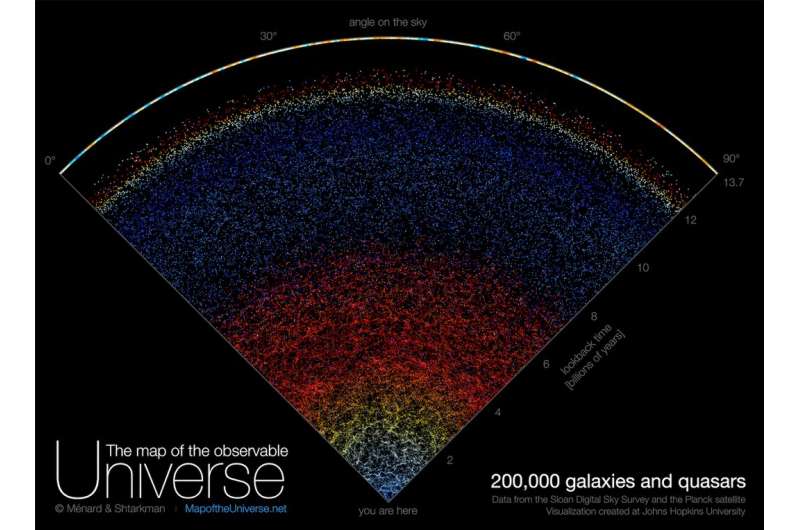Our goal here is to show everybody what the universe really looks like."
The Sloan Digital Sky Survey is a pioneering effort to capture the night sky through a telescope based in New Mexico. Night after night for years, the telescope aimed at slightly different locations to capture this unusually broad perspective.
The map, which Ménard assembled with the help of former Johns Hopkins computer science student Nikita Shtarkman, visualizes a slice of the universe, or about 200,000 galaxies—each dot on the map is a galaxy and each galaxy contains billions of stars and planets. The Milky Way is simply one of these dots, the one at the very bottom of the map.
The expansion of the universe contributes to make this map even more colorful. The farther an object, the redder it appears. The top of the map reveals the first flash of radiation emitted soon after the Big Bang, 13.7 billion years ago.
"In this map, we are just a speck at the very bottom, just one pixel. And when I say we, I mean our galaxy, the Milky Way which has billions of stars and planets," Ménard says. "We are used to seeing astronomical pictures showing one galaxy here, one galaxy there or perhaps a group of galaxies. But what this map shows is a very, very different scale."
Ménard hopes people will experience both the map's undeniable beauty and its awe-inspiring sweep of scale.
"From this speck at the bottom," he says, "we are able to map out galaxies across the entire universe, and that that says something about the power of science."
More information: Map: mapoftheuniverse.net/
Provided by Johns Hopkins University

